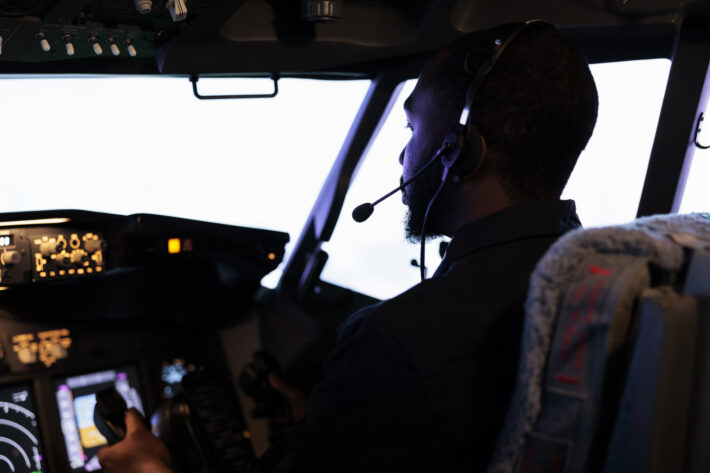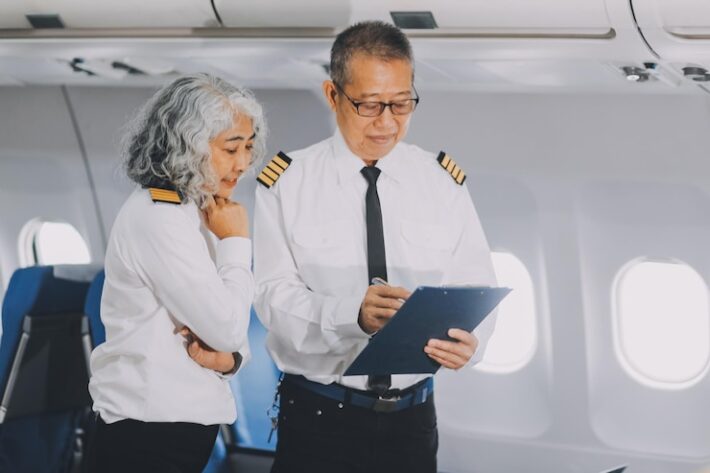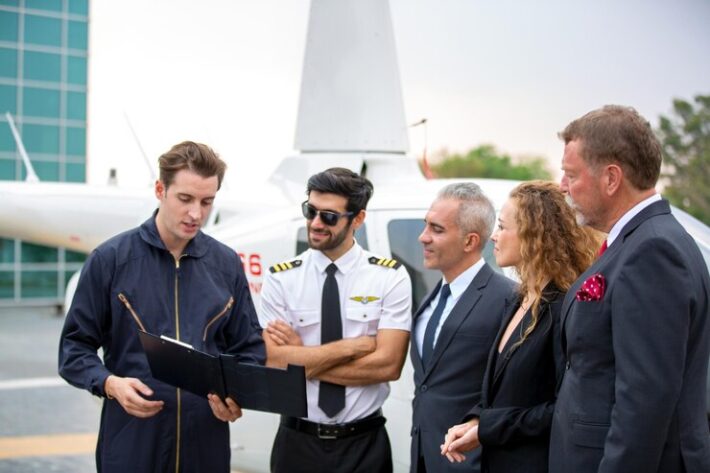Flying Club vs. Aircraft Rental: Which Option Is Right for You?

For pilots seeking regular access to aircraft, the choice between joining a flying club and using traditional rental options can significantly impact both your flying experience and your wallet. This comprehensive guide examines the pros and cons of each approach, helping you determine which option best aligns with your aviation goals, budget, and lifestyle.
Understanding Your Aircraft Access Options
Pilots today have several pathways to aircraft access, with flying clubs and traditional rentals representing the most common approaches for those who don’t own their own aircraft.
According to the Aircraft Owners and Pilots Association (AOPA), flying clubs have seen a 15% growth in membership over the past five years, reflecting their increasing popularity as an alternative to both ownership and traditional rental.
“The decision between flying club membership and traditional rental isn’t just about hourly rates—it’s about the entire flying experience, from scheduling flexibility and aircraft availability to the social aspects and long-term financial considerations.” – Jennifer Martinez, Flight Instructor and Club Manager
Traditional Aircraft Rental: The Basics
How Traditional Rental Works
Structure: Pay-as-you-go access to aircraft through an FBO, flight school, or rental provider.
Typical costs:
- No membership fees or buy-in requirements
- Hourly wet rates (including fuel) for single-engine aircraft: $140-$220
- Potential daily minimums for longer reservations (typically 2-3 hours per day)
- Possible insurance deductibles or renter’s insurance requirements
Commitment level: Minimal, with no ongoing obligations beyond each individual rental.
Advantages of Traditional Rental
Flexibility and Freedom:
- No long-term commitment required
- Ability to rent from multiple providers
- Freedom to fly when and where you want
- Easy to try different aircraft types
Simplicity:
- Straightforward pay-per-use model
- No responsibility for maintenance or ownership costs
- No administrative duties or meetings
- Clear cancellation and scheduling policies
Accessibility:
- Available at most airports with flight schools or FBOs
- Often newer aircraft with modern avionics
- Professional management and maintenance
- Standardized procedures and policies
Disadvantages of Traditional Rental
Higher Hourly Costs:
- Typically 30-50% higher hourly rates than flying clubs
- Daily minimums on multi-day trips
- Potential for additional fees and surcharges
- Higher insurance costs or deductibles
Availability Challenges:
- Competition for popular weekend and holiday times
- Limited advance booking windows at some providers
- Aircraft unavailability due to maintenance or training
- Fewer options at smaller airports
Impersonal Experience:
- Limited sense of community or belonging
- Minimal opportunity for mentorship
- Transactional rather than relationship-based
- Less investment in your development as a pilot
Flying Clubs: The Basics
How Flying Clubs Work
Structure: Membership organization where pilots share access to one or more aircraft, typically with a buy-in or initiation fee plus monthly dues and lower hourly rates.
Typical costs:
- Initiation fee/buy-in: $500-$5,000 (depending on club structure)
- Monthly dues: $50-$200
- Hourly wet rates: $90-$150 (typically 30-50% lower than rental rates)
- Potential work requirements or volunteer hours
Commitment level: Moderate to high, with financial investment and often social expectations.
Types of Flying Clubs
Equity Clubs:
- Members own shares of the aircraft
- Higher buy-in costs but potentially lower monthly fees
- Members have governance rights and ownership stake
- Potential for equity return when leaving the club
Non-Equity Clubs:
- Club owns or leases the aircraft
- Lower initial investment
- Monthly dues cover fixed costs
- Typically easier to join and leave
Flying Schools with Club Components:
- Hybrid model offering both instruction and club benefits
- Often transitional for new pilots
- May offer both traditional rental and club options
- Structured progression path for pilots
Advantages of Flying Clubs
Cost Savings:
- Significantly lower hourly rates (30-50% less than rental)
- Shared fixed costs among multiple members
- No daily minimums on most trips
- Potential tax advantages in some club structures
Community and Support:
- Built-in network of fellow pilots
- Mentorship opportunities from experienced members
- Social events and fly-outs
- Knowledge sharing and informal instruction
Enhanced Availability:
- Often better aircraft availability for weekends and holidays
- Ability to make longer-term reservations
- Fewer scheduling conflicts with training
- More flexible cancellation policies
Ownership Benefits Without Full Commitment:
- Input on aircraft upgrades and maintenance
- Consistent aircraft condition and equipment
- Familiarity with specific aircraft
- Pride of partial ownership
Disadvantages of Flying Clubs
Financial Commitment:
- Upfront costs for membership or buy-in
- Ongoing monthly dues regardless of flying frequency
- Potential for unexpected assessments for major maintenance
- More complex exit process
Administrative Responsibilities:
- Possible requirement to attend meetings
- Volunteer time expectations
- Involvement in decision-making processes
- Interpersonal dynamics to navigate
Limited Flexibility:
- Restricted to club aircraft
- Geographic limitation to home airport
- Potential scheduling constraints with popular times
- Club rules and policies to follow
Comparing Costs: The Numbers Breakdown
Let’s examine how the costs compare for a typical private pilot flying 50 hours per year:
Traditional Rental Scenario
Aircraft: Cessna 172S
Hourly Rental Rate: $180 (wet)
Annual Flying: 50 hours
| Expense Category | Annual Cost |
|---|---|
| Hourly Aircraft Rental (50 hrs × $180) | $9,000 |
| Renter’s Insurance | $350 |
| Total Annual Cost | $9,350 |
| Cost Per Hour | $187 |
Flying Club Scenario
Aircraft: Cessna 172S (club owned)
Club Structure: Non-equity
Annual Flying: 50 hours
| Expense Category | Annual Cost |
|---|---|
| Initiation Fee (amortized over 5 years) | $200 ($1,000 ÷ 5) |
| Monthly Dues ($100 × 12 months) | $1,200 |
| Hourly Aircraft Rate (50 hrs × $120) | $6,000 |
| Total Annual Cost | $7,400 |
| Cost Per Hour | $148 |
Five-Year Comparison
| Year | Traditional Rental | Flying Club | Annual Savings | Cumulative Savings |
|---|---|---|---|---|
| 1 | $9,350 | $8,200* | $1,150 | $1,150 |
| 2 | $9,350 | $7,400 | $1,950 | $3,100 |
| 3 | $9,350 | $7,400 | $1,950 | $5,050 |
| 4 | $9,350 | $7,400 | $1,950 | $7,000 |
| 5 | $9,350 | $7,400 | $1,950 | $8,950 |
*Year 1 includes full initiation fee of $1,000
Five-Year Total:
- Traditional Rental: $46,750
- Flying Club: $37,800
- Total Savings: $8,950
Break-Even Analysis
For pilots concerned about the upfront costs of club membership, it’s helpful to calculate the break-even point:
Assumptions:
- Club initiation fee: $1,000
- Monthly dues: $100
- Hourly savings: $60 per hour ($180 rental vs. $120 club)
Break-Even Calculation:
- Monthly fixed cost difference: $100 (club dues)
- Hours needed to offset monthly dues: 1.67 hours ($100 ÷ $60)
- Hours needed to offset initiation fee: 16.67 hours ($1,000 ÷ $60)
Conclusion: A pilot flying more than 20 hours in the first year and at least 1.67 hours per month thereafter would financially benefit from club membership.
Decision Factors: Beyond the Numbers
While cost is important, several other factors should influence your decision:
Flying Frequency and Patterns
Frequent Flyers (40+ hours/year):
- Flying clubs typically offer better value
- Community benefits enhance experience
- Consistent aircraft access important
Occasional Flyers (less than 20 hours/year):
- Traditional rental may be more economical
- Flexibility to fly only when desired
- No ongoing financial commitment
Seasonal Flyers:
- Consider clubs with inactive/active status options
- Evaluate rental providers’ currency requirements
- Look at block time purchases for busy seasons
Aircraft Preferences
Specific Aircraft Type Preference:
- Research clubs with your preferred aircraft
- Consider rental providers with diverse fleets
- Evaluate checkout requirements across types
Avionics and Equipment Needs:
- Clubs often upgrade avionics based on member input
- Rental fleets may offer more modern panel options
- Consider IFR capability if instrument rated
Aircraft Age and Condition:
- Club aircraft often older but well-maintained
- Rental fleets typically newer with more frequent turnover
- Evaluate maintenance practices and appearance
Personal Factors
Social Preferences:
- Flying clubs offer built-in community
- Traditional rental provides more independence
- Consider your desire for flying companions
Schedule Flexibility:
- Evaluate your need for last-minute availability
- Consider how far in advance you typically plan
- Assess weekend and holiday flying importance
Geographic Stability:
- Long-term area residents benefit more from club membership
- Frequent relocations favor traditional rental
- Consider commute time to club aircraft
Finding the Right Flying Club
If you’re leaning toward the flying club option, here’s how to find and evaluate potential clubs:
Research Resources
Online Directories:
- AOPA Flying Club Finder
- EAA Flying Club Network
- PilotPair community connections
Local Resources:
- Airport bulletin boards and websites
- Local flight schools and FBOs
- Aviation meetups and events
- CFIs and flight instructors
Evaluation Criteria
Financial Health:
- Review financial statements if available
- Assess membership stability and turnover
- Understand reserve fund status
- Evaluate aircraft equity and loan status
Operational Structure:
- Examine bylaws and operating rules
- Understand scheduling system and limitations
- Review maintenance practices and standards
- Assess instructor availability if needed
Cultural Fit:
- Attend a meeting or social event before joining
- Talk to current members about their experience
- Understand the club’s primary focus (training, recreation, etc.)
- Evaluate the general atmosphere and compatibility
Aircraft Considerations:
- Aircraft types and conditions
- Avionics and equipment
- Maintenance history and practices
- Upgrade plans and schedule
Finding Quality Rental Providers
If traditional rental better suits your needs, here’s how to find the best providers:
Research Resources
Online Directories:
- GlobalAir Aircraft Rentals
- AOPA Airport Directory
- PilotPair community recommendations
Local Resources:
- Airport websites and directories
- Aviation social media groups
- Local pilot communities
- Flight schools and training centers
Evaluation Criteria
Fleet Assessment:
- Aircraft types and age
- Avionics and equipment
- Overall condition and appearance
- Availability and fleet size
Operational Policies:
- Scheduling system and advance booking limits
- Cancellation and weather policies
- Daily minimums and overnight fees
- Currency and checkout requirements
Reputation and Reliability:
- Customer reviews and testimonials
- Maintenance practices and aircraft availability
- Instructor quality if training is offered
- Responsiveness and customer service
Cost Structure:
- Hourly rates and what they include
- Additional fees and charges
- Insurance requirements and costs
- Block time or membership discount options
Hybrid Approaches: Getting the Best of Both Worlds
Some pilots find that combining elements of both options provides the ideal solution:
Block Time Purchases
Many rental providers offer discounted rates when you pre-purchase blocks of flight time:
How it works:
- Purchase 10+ hours in advance
- Receive 5-15% discount on hourly rates
- Use hours within specified timeframe
- Maintain flexibility without membership commitment
Best for:
- Pilots flying 20-40 hours annually
- Those wanting rental flexibility with some cost savings
- Pilots testing whether regular flying fits their lifestyle
Multi-Club Memberships
Some pilots join multiple clubs to access different aircraft types or locations:
How it works:
- Primary membership in one club
- Associate or limited membership in others
- Access to diverse fleet and locations
- Broader community connections
Best for:
- Frequent flyers seeking aircraft variety
- Pilots who travel between regions regularly
- Those willing to manage multiple memberships
Rental-to-Club Transitions
Many pilots start with rentals and transition to clubs as their flying increases:
How it works:
- Begin with traditional rentals while building experience
- Research local clubs and attend events
- Transition to club membership when flying frequency justifies cost
- Maintain relationships with rental providers for specialty aircraft
Best for:
- New pilots uncertain about long-term flying plans
- Those building experience before club checkout requirements
- Pilots saving for club buy-in or initiation fees
Special Considerations for Different Pilot Types
Student Pilots
Flying Club Advantages:
- Potential for lower-cost instruction from club CFIs
- Community support during learning process
- Consistent aircraft for training
- Built-in mentor network
Traditional Rental Advantages:
- Professional standardized instruction
- Structured training environment
- Flexibility to change instructors easily
- No long-term commitment during initial training
Recommendation: Most student pilots benefit from starting with traditional rental through a flight school, then considering club membership after earning their private certificate.
Private Pilots Building Time
Flying Club Advantages:
- Lower hourly costs maximize flying hours
- Community for finding safety pilots
- Cost sharing opportunities with other members
- Consistent aircraft for building proficiency
Traditional Rental Advantages:
- Experience with various aircraft types
- No monthly commitment during slow periods
- Flexibility to rent at different locations
- Access to newer avionics in some cases
Recommendation: Pilots actively building time toward commercial or other ratings typically benefit significantly from club membership due to the lower hourly costs.
Recreational Pilots
Flying Club Advantages:
- Social aspects enhance recreational flying
- Organized fly-outs and destinations
- Shared experiences with fellow enthusiasts
- Lower costs for occasional pleasure flights
Traditional Rental Advantages:
- No financial obligation during non-flying periods
- Flexibility for seasonal or occasional flying
- Access to various aircraft for different missions
- Simplicity of pay-as-you-go model
Recommendation: Recreational pilots should base their decision primarily on flying frequency and social preferences rather than just cost considerations.
Technology Considerations
Scheduling Systems
Flying Club Systems:
- Member-accessible online scheduling
- Longer advance booking windows
- Often simpler systems with fewer restrictions
- May have standby or waitlist options
Rental Provider Systems:
- Professional scheduling software
- Integration with billing and records
- Mobile apps for on-the-go booking
- Automated confirmation and reminders
Maintenance Tracking
Flying Club Approach:
- Member involvement in maintenance decisions
- Squawk reporting systems
- Often more detailed aircraft history available
- Potential for owner-assisted maintenance
Rental Provider Approach:
- Professional maintenance management
- Standardized inspection procedures
- Replacement aircraft often available
- Maintenance status visible in scheduling system
Making Your Decision: A Step-by-Step Approach
1. Assess Your Flying Profile
Key Questions:
- How many hours do you realistically expect to fly annually?
- How important is schedule flexibility and aircraft availability?
- Do you prefer flying the same aircraft consistently or trying different types?
- How important is the social aspect of flying to you?
- Are you planning to stay in your current location long-term?
2. Calculate Your Total Costs
For Flying Clubs:
- Initiation fees or buy-in costs
- Monthly dues
- Hourly aircraft rates
- Any additional fees or work requirements
For Traditional Rental:
- Hourly rental rates
- Renter’s insurance costs
- Potential membership or program fees
- Daily minimums for longer trips
3. Visit and Evaluate Options
Flying Club Visits:
- Attend an open house or meeting
- Request a tour of facilities and aircraft
- Meet current members
- Review governing documents
Rental Provider Visits:
- Inspect aircraft fleet
- Discuss scheduling policies
- Review checkout requirements
- Understand billing procedures
4. Consider Starting with a Hybrid Approach
Potential Strategy:
- Begin with block time purchase at rental provider
- Attend flying club social events as guest
- Build relationships in both environments
- Transition based on experience and preferences
Conclusion: Making the Right Choice for Your Aviation Journey
The decision between flying club membership and traditional rental ultimately depends on your unique combination of flying goals, budget, schedule, and personal preferences. Both options offer viable pathways to aircraft access, each with distinct advantages and limitations.
Flying clubs typically offer significant cost savings for regular flyers, along with community benefits and a sense of ownership that many pilots find rewarding. Traditional rentals provide flexibility, simplicity, and freedom from long-term commitments that better suit some flying lifestyles.
Many pilots find that their ideal solution evolves over time, often starting with traditional rentals during training and early flying, then transitioning to club membership as their flying becomes more regular and their preferences more defined.
Whichever path you choose, the key is making an informed decision based on a thorough understanding of both the financial implications and the qualitative factors that will shape your flying experience. By carefully evaluating your options against your personal priorities, you can select the aircraft access model that best supports your aviation journey.
What’s your experience with flying clubs or aircraft rental? Share your insights and questions in the comments below!
Looking to connect with pilots who can share their experiences with local flying clubs and rental options? Join PilotPair today to tap into the collective wisdom of the pilot community.




